Destinations In The UAE That Are Tentative UNESCO World Heritage Sites
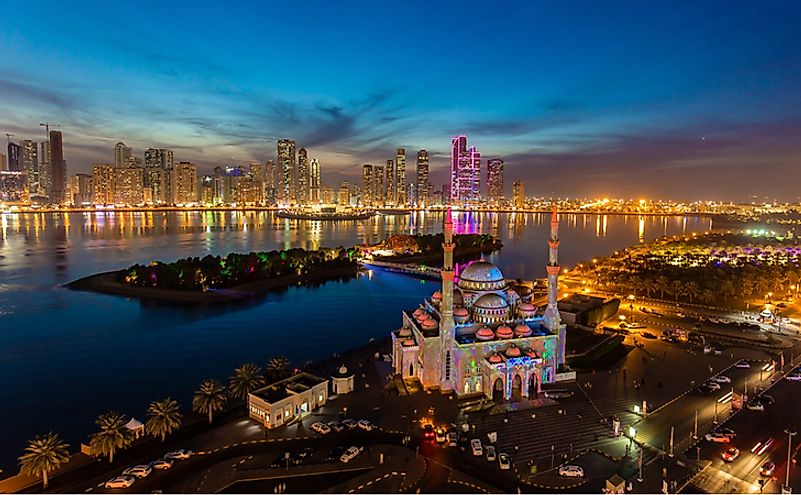
Like most other parts of the Arab World, the United Arab Emirates (UAE) has witnessed the evolution of the human culture over a time span encompassing several thousand years. Although most of UAE is covered by parched desert spans, these apparently uninhabited parts of the country hide numerous mysteries in the form of unique geological features, astounding archeological sites, ancient architectural masterpieces, and much more. Thus, the UAE has many sites that have the potential to become UNESCO World Heritage Sites. Although the country has only one such site (the Cultural Sites of Al Ain) inscribed on the list, there are eight more on the tentative list waiting to be recognized by the UNESCO.
8. Abu Dhabi Sabkha -
The coastal sabkha region of Abu Dabhi is located on the Arabian Gulf’s southern coast. It is a massive area of flat, salt-encrusted desert without any plant cover. A part of this sabkha is regarded as the world’s only complete sabkha that has all the four distinct layers of a sabkha at one site. These layers are lagoon mud, microbial mat, gypsum mud and anhydrite nodules from bottom to top. It is estimated that the sabkha was formed over a period of 7000 years through the action of wind and waves. The unique ecosystem is valuable to geologists but is currently degraded due to human activities related to developmental activities in the region.
7. Al Bidya Mosque -
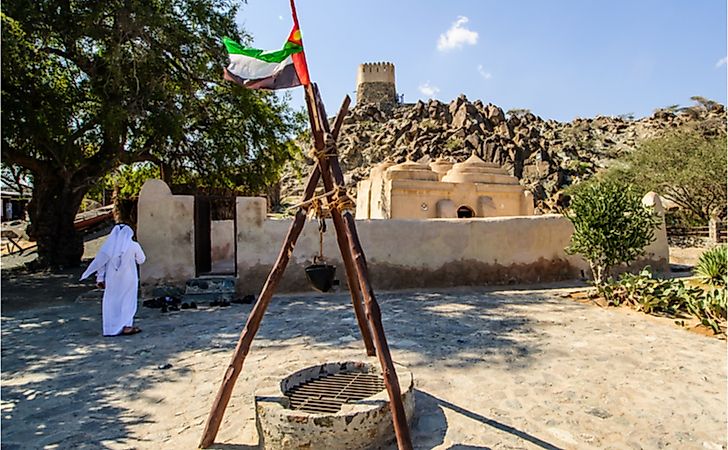
Al Bidya Mosque is a beautiful mosque located in the Al Bidya village in the Fujairah Emirate of the UAE. It is unique in having four domes that are unequal in size and are supported on a single pillar which is the main pillar of the entire building. The rest of the mosque also has an irregular shape and is located in a rectangular yard. The Al Bidya Mosque is regarded as the oldest mosque in the UAE and one of the oldest continually operating ones. The engineering features and architectural design of the mosque are also distinct. All these factors make it an ideal candidate for nomination for the UNESCO World Heritage tag.
6. Ed-Dur Site -
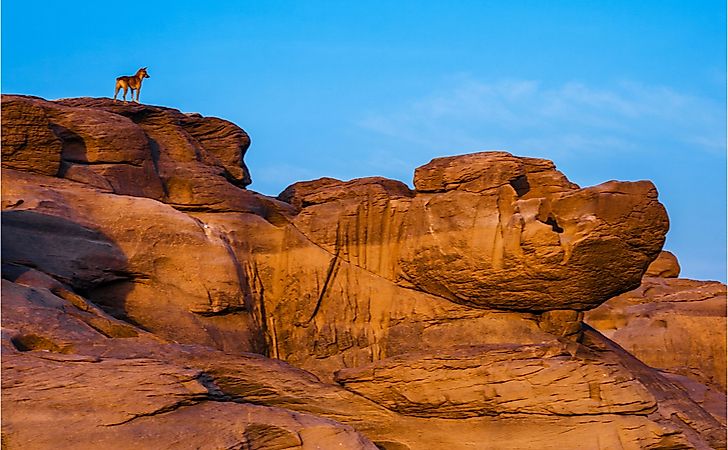
Overlooking the Al Beidha Lake, the Ed-Dur Site is one of UAE’s largest archaeological sites. The site is protected from strong winds by high sand dunes surrounding it. It is believed that the former settlement at Ed-Dur was built to serve as a regional food supplier and a center of commerce on an ancient trade route. A square fort, funeral configurations, temple, etc., were excavated at the site. The uniqueness of the Ed-Dur site is in the presence of the ruins of the ancient 1st-century temple at the site that was used to worship the Sun God, the only such temple in the entire Gulf region.
5. Khor Dubai -
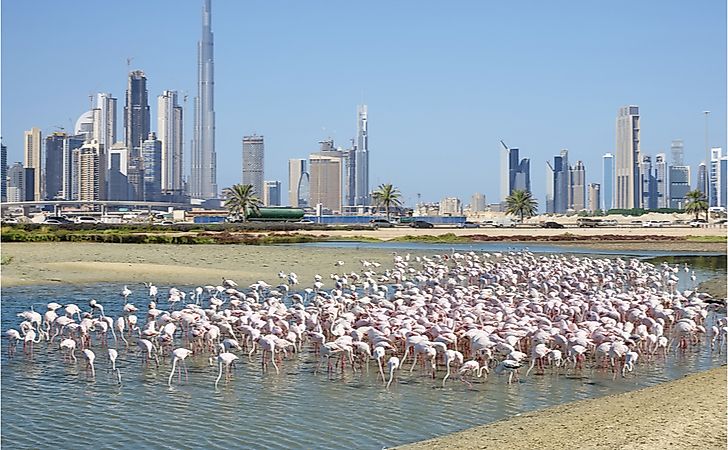
The natural seawater inlet of the Arabian Gulf has also on the tentative list of UNESCO World Heritage Sites from the UAE. It is located in the heart of Dubai where it runs for 14 km and has a width varying from 100 to 500 m. The Khor Dubai divides Dubai into two parts, Deira and Bur Dubai, and is important to the city’s economy. Khor Dubai and its surrounding neighborhoods are considered to be an area of important cultural and commercial interchange. The salt creek bears testimony to the development of Dubai from a small desert settlement to a thriving multi-cultural city with a prosperous economy based on free trade and international commerce. The traditional wind-tower houses on the banks of the creek also represent a unique architectural tradition. All these factors make the Khor Dubai a top contender for consideration as a UNESCO World Heritage Site.
4. Sir Bu Nair Island -
The Sir Bu Nair island in the UAE is an important marine protected area known for its unique geological formations and rich marine flora and fauna. It also serves as a major breeding ground of sea turtles and a variety of marine birds like the crested tern, Socotra cormorant, red-billed tropicbird, etc. The rich environmental biodiversity of the island makes it a strong candidate for inclusion in the World Heritage List.
3. Settlement and Cemetery of Umm an-Nar Island -
The Umm an-Nar Island is an off-limit island of great archeological significance located on the Arabian Gulf’s southern shores. It hosts a cemetery and a settlement built of unshaped stones obtained from a nearby limestone plateau. Bones of animals and birds including the extinct ‘Bennu' bird were also uncovered at the site. The immense archeological and paleontological significance of the site puts it on the tentative list of UNESCO World Heritage Sites from the UAE.
2. Sharjah: the Gate to Trucial States -
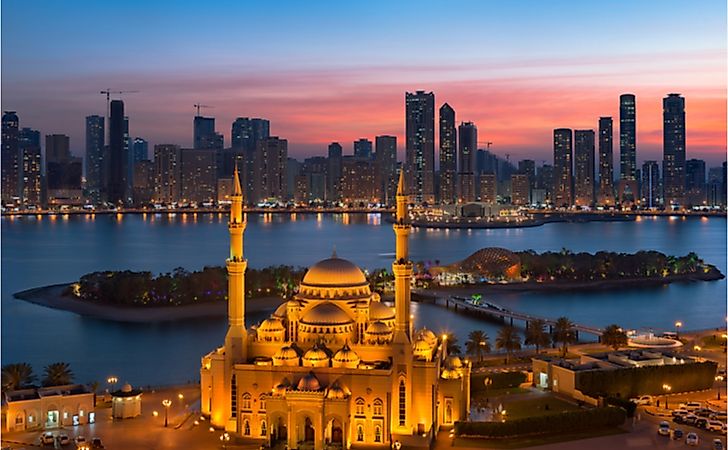
Sharjah, a city associated with centuries of rich Arab history, is located in the old part of the Emirate of Sharjah in the UAE. Sharjah finds mention in accounts of ancient writers and travelers like the 11th-century geographer Al Edrissy. It was the gate to the Trucial States and an important hub of the pearl trade. The city serves as an example of modern urban development of historical cities.
1. The Cultural Landscape of the Central Region in the Emirate of Sharjah -
This site refers to a mountainous region located in the central region of Sharjah. Humans have lived in the area for over 250,000 years lending a unique and rich cultural value to the area. Five major archeological sites have been discovered in the region. This archeological site is considered to be of great importance for the understanding of phenomena of universal importance like the migration of modern humans out of Africa and their nomadic way of life, the adaptation of humans to changing climate and landscapes, and how they learned to use the available resources for their needs.











